
Tomorrow Never Dies is a 1999 third-person shooter stealth video game based on the 1997 James Bond film of the same name. It was developed by Black Ops Entertainment and co-published by Electronic Arts and MGM Interactive for the PlayStation.
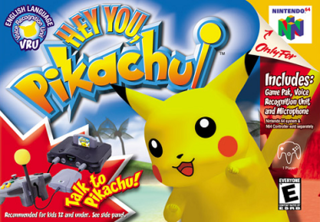
Hey You, Pikachu! is a virtual pet Pokémon spin-off video game for the Nintendo 64 developed by Ambrella and published by Nintendo. It was released in Japan on December 12, 1998, and in North America on November 6, 2000. The player is asked to help Professor Oak test the PokéHelper, a device that lets humans communicate with Pokémon. The game is set in the Kanto region between Pewter City and Viridian City, where the player is introduced to a wild Pikachu. The player is able to communicate with a 256-word database through the Voice Recognition Unit (VRU), a Nintendo 64 hardware accessory that, when paired with a microphone, can comprehend and analyze human speech. Along with speaking with Pikachu, the VRU allows the player to move around and gather items.
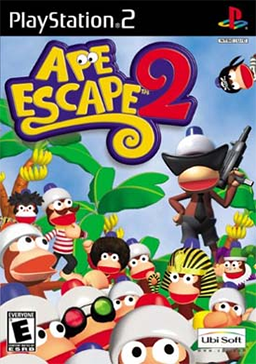
Ape Escape 2 is a platform video game developed and published by Sony Computer Entertainment for the PlayStation 2 video game console. It is the second game in the Ape Escape series, and is also used as the basis for the animated series by Frederator.

Virtua Tennis 2, known as Tennis 2K2 in North America and Power Smash 2 in Japan, is a sequel to Virtua Tennis that was released for the Sega Dreamcast, Sega NAOMI arcade unit and Sony's PlayStation 2 in 2001–2002. New features included the ability to slice and play as female players such as Monica Seles, Serena Williams, Venus Williams and Lindsay Davenport and the males such as Patrick Rafter, Magnus Norman, Thomas Enqvist and Carlos Moyá and mixed doubles matches. The game was created and produced by Hitmaker, with Acclaim Entertainment publishing it in Europe for the PS2. This was the last Virtua Tennis game to be released for the Dreamcast following its discontinuation.
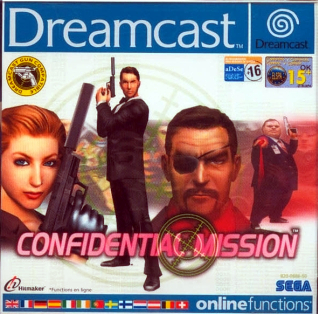
Confidential Mission is a light gun game published by Sega, first available as an arcade game, then ported to the Dreamcast. The game is in the same style as the Virtua Cop series or The House of the Dead series, with support for one or two players. The game was developed by Sega's Hitmaker development team and first released in 2000. Its plot is of the same vein as James Bond and Mission: Impossible. Despite it also having an arcade release, it never enjoyed the popularity of the Virtua Cop nor The House of the Dead series, which were also produced by Sega.

Konami Krazy Racers is a kart racing video game published and developed by Konami for the Game Boy Advance handheld video game console. It was first released in Japan, and was later released in North America and some PAL regions. It was also re-released for Wii U Virtual Console on October 15, 2015 in Europe. It was a launch game for the system. Konami Krazy Racers makes use of a variety of characters and concepts from several of Konami's franchises, including Castlevania, Metal Gear, and Gradius. It plays similarly to the Mario Kart series, with eight characters per circuit and offensive/defensive items placed at predetermined points in the tracks.

EyeToy: Monkey Mania, also known as Saru Eye Toy Ōsawagi! Wakki Waki Game Tenkomori!! in Asia, Japan, and Korea, is a party game based on the Ape Escape franchise that requires the EyeToy camera peripheral to play. The game consists of the franchise's titular monkeys engaging in minigames, with multiplayer for up to four players. The title was sold as a standalone game, and also in a bundle with a silver-colored EyeToy peripheral.

Ape Escape is a series of video games developed primarily by Japan Studio and published by Sony Computer Entertainment, starting with Ape Escape for PlayStation in 1999. The series incorporates ape-related humour, unique gameplay, and a wide variety of pop culture references. The first game in the series is the first game to have made the DualShock or Dual Analog controller mandatory.
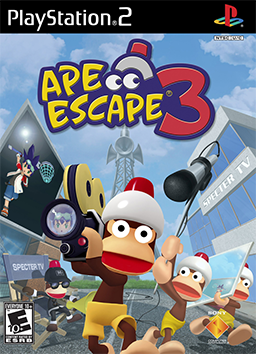
Ape Escape 3 is a platform video game published and developed by Sony Computer Entertainment for the PlayStation 2 video game console.
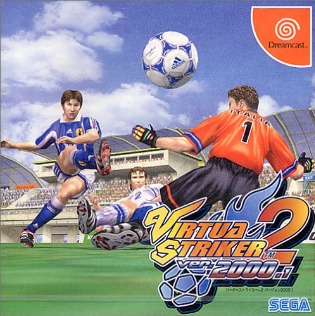
Virtua Striker 2 is a sports video game developed and published by Sega for arcades in 1997. It is the sequel to the 1994 video game Virtua Striker, and the second game in the Virtua Striker series. A series of updates was released from 1998 to 1999, starting with Virtua Striker 2 ver. 1998 and ending with Virtua Striker 2 ver. 2000.1, that latest update being released for the Dreamcast in Japan in 1999, and then internationally in 2000, with the North American version re-titled to Virtua Striker 2. A sequel, Virtua Striker 3, was released in 2001.
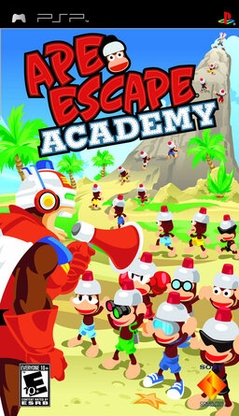
Ape Escape Academy, also known as Ape Academy in Europe and Piposaru Academia: Dossari! Sarugē Daizenshū in Japan, is a game for the PlayStation Portable system that consists of a collection of 47 mini-games, many of which borrow from elements of Ape Escape 2. The game was first released in Japan and later in Europe and North America. By utilizing the PSP's Wi-Fi capabilities, up to 4 players can play at a time.

Super Puzzle Bobble, released as Super Bust-A-Move in Europe and North America, is a puzzle video game in the Puzzle Bobble series. It was developed by Taito, and released on November 27, 2000 by Acclaim Entertainment for the PlayStation 2, and by CyberFront and EON Digital Entertainment for Windows in 2001. It was later ported to the Game Boy Advance that same year, the Japanese version under the name Super Puzzle Bobble Advance. It was re-released in Japan for the PlayStation 2 in 2004 as part of Super Puzzle Bobble DX, which is Volume 62 of the Japan-exclusive Simple 2000 Series. This compilation includes a few graphical enhancements.

Super Rub 'a' Dub is a downloadable game on the PlayStation Store for the PlayStation 3 video game console. It was announced on February 8, 2007 at the D.I.C.E. Summit, and released in April-May 2007 alongside a demo version. It was later ported to Japan under the name Pocha Pocha Ahiru-chan (ぽちゃぽちゃあひるちゃん) on May 25, 2007.

Ape Escape is a platform video game, developed by Japan Studio and published by Sony Computer Entertainment. It was released for the PlayStation in June 1999 in North America and Japan, and July 1999 in Europe. The first in the Ape Escape series, the game tells the story of an ape named Specter who gains enhanced intelligence and a malevolent streak through the use of an experimental helmet. Specter produces an army of apes, which he sends through time in an attempt to rewrite history. Spike, the player character, sets out to capture the apes with the aid of special gadgets.

PlayStation Move Ape Escape, simply titled Ape Escape in Europe and known in Asian countries as Ape Escape: On the Move!, and in Japan as Furi Furi! Saru Get You, is a 2010 rail shooter and party video game developed by Sony Computer Entertainment's Japan Studio and published by Sony Computer Entertainment for the PlayStation 3 video game console. The game was originally announced at the Tokyo Game Show 2009 as one of the title supporting the PlayStation Move controller. The title was released on December 9, 2010, in Japan, then in 2011 on June 24 for Europe, and on July 5 for North America. An English version of the game in Asia was also released January 31, 2011.

GunGriffon Blaze is a video game developed by Game Arts and published by Capcom and Working Designs in 2000, and by Swing! Deutschland in Europe in 2002 for PlayStation 2. The game was a launch title on the PlayStation 2 in North America.

Wakeboarding Unleashed Featuring Shaun Murray is an extreme sports video game developed by Shaba Games, Small Rockets and Beenox, and published by Activision under the Activision O2 label and Aspyr for Game Boy Advance, Macintosh, Microsoft Windows, PlayStation 2, Xbox and mobile phones in 2003. It features wakeboarder Shaun Murray.
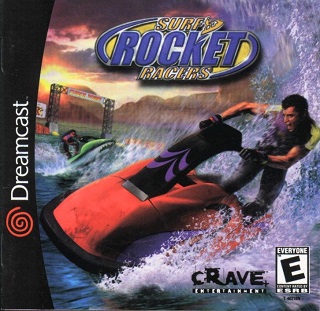
Surf Rocket Racers, known in Japan as Power Jet Racing 2001, is a video game developed and published by CRI Middleware and Crave Entertainment for Dreamcast in 2000-2001.


















